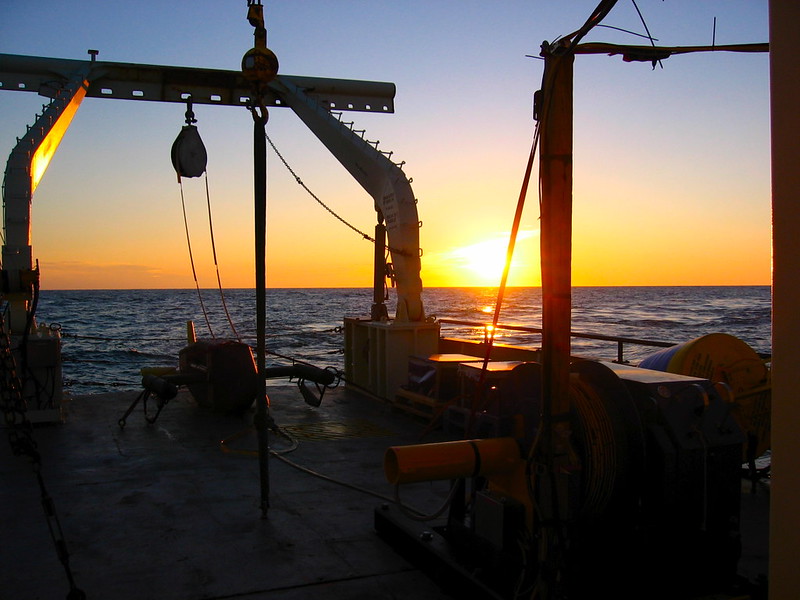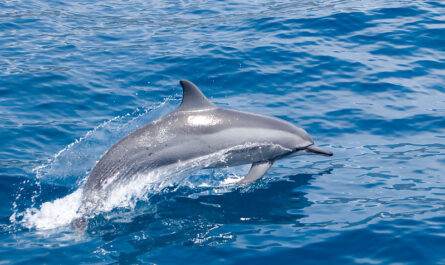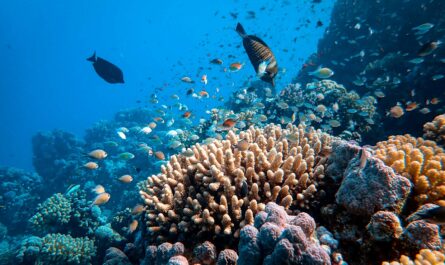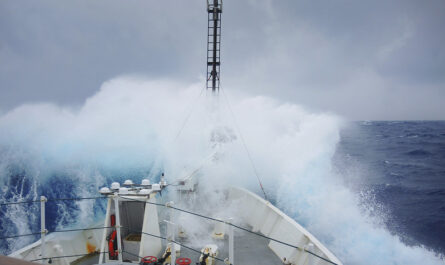The Sargasso Sea, located in the North Atlantic Ocean, is a region unlike any other on Earth. Unlike other seas, it has no land boundaries, with its borders defined instead by ocean currents such as the Gulf Stream, North Atlantic Drift, and Canary Current. Named after the Sargassum seaweed that floats abundantly on its surface, the Sargasso Sea is a unique and ecologically significant habitat. It serves as a critical nursery for marine life, providing shelter and food for a diverse array of species, from tiny fish larvae to large migratory animals like eels and turtles.
This article explores how the Sargasso Sea functions as a marine nursery, its role as a migration hub in the Atlantic, and the challenges it faces in a changing world.
The Unique Ecosystem of the Sargasso Sea
The Sargasso Sea covers over 2 million square miles in the North Atlantic, stretching from the west of the Azores to the east of the Gulf Stream. Its defining characteristic is the floating mats of Sargassum, a golden-brown seaweed that drifts freely on the ocean’s surface. Unlike rooted plants, Sargassum is pelagic, meaning it thrives in open water, creating a unique ecosystem that supports a variety of marine species.
Key Features of the Sargasso Sea Ecosystem
- Floating Habitat: The mats of Sargassum provide shelter and food for countless marine organisms, from plankton to juvenile fish and invertebrates. These mats act as floating oases in the otherwise barren open ocean.
- High Biodiversity: The Sargasso Sea supports over 150 species of fish and more than 100 species of invertebrates, many of which are uniquely adapted to life in and around Sargassum.
- Clear, Warm Waters: The sea is characterized by its clear waters and relatively stable temperature, making it an ideal habitat for marine species at various stages of their life cycles.
The Sargasso Sea as a Nursery for Marine Life
The Sargasso Sea’s calm waters and abundant Sargassum make it an ideal nursery for many marine species. Juvenile animals find refuge here, protected from predators by the dense mats of seaweed and sustained by the food resources the Sargassum ecosystem provides.
1. Habitat for Juvenile Fish
The floating Sargassum provides a safe environment for juvenile fish to grow and develop. Species such as mahi-mahi, amberjack, and flying fish use the Sargasso Sea as a nursery. These fish lay their eggs in or near the Sargassum, where the larvae are protected from open-water predators. The dense vegetation offers camouflage and a steady supply of plankton and smaller prey.
2. Breeding Ground for Eels
The Sargasso Sea plays a vital role in the life cycles of both European eels (Anguilla anguilla) and American eels (Anguilla rostrata). These eels are catadromous, meaning they live in freshwater but migrate to the ocean to spawn. Both species make their epic journeys from rivers and streams in Europe and North America to the Sargasso Sea, where they breed and lay their eggs.
Once hatched, the eel larvae, known as leptocephali, drift with ocean currents for months or even years before returning to their respective continents. The Sargasso Sea’s calm waters and abundant nutrients are critical for the survival of these young eels.
3. Sanctuary for Sea Turtles
Several species of sea turtles, including loggerheads, hawksbills, and green turtles, rely on the Sargasso Sea as a safe haven during their early life stages. After hatching on beaches, young turtles swim out to the open ocean and seek refuge in the floating Sargassum mats. These mats offer shelter from predators and a rich feeding ground, allowing the turtles to grow and gain strength for their long journeys across the Atlantic.
4. Breeding Grounds for Billfish and Sharks
The Sargasso Sea also serves as an important habitat for large pelagic species, including billfish (like marlin and swordfish) and certain sharks. These predators rely on the rich biodiversity of the Sargassum ecosystem to support their young, ensuring the survival of future generations.
The Sargasso Sea as a Migration Hub
The Sargasso Sea is not just a nursery; it is also a key migration hub for many marine species. Its central location in the Atlantic and the currents that define its borders make it a crossroads for marine life on epic migratory journeys.
1. Migratory Routes for Eels
As mentioned earlier, the Sargasso Sea is the spawning ground for both European and American eels. These species rely on the currents surrounding the Sargasso Sea, such as the Gulf Stream and the North Atlantic Drift, to transport their larvae back to freshwater habitats across the Atlantic.
2. Sea Turtles’ Oceanic Voyages
Young sea turtles, after spending years growing in the safety of the Sargassum mats, embark on transoceanic migrations. Loggerhead turtles, for example, are known to travel from the Sargasso Sea to the eastern Atlantic, where they spend years feeding in the waters off the Azores and Africa before returning to the Americas to nest.
3. Humpback Whale Migration
The Sargasso Sea lies along the migratory route of humpback whales, which travel between feeding grounds in the North Atlantic and breeding grounds in the tropics. While the whales do not directly rely on the Sargassum ecosystem, the area serves as a waypoint on their long journeys.
4. Bird Migration
The Sargasso Sea is also significant for migratory seabirds, such as storm petrels and shearwaters, which rely on the area’s abundant marine life for sustenance during their long flights across the Atlantic.
Threats to the Sargasso Sea
Despite its ecological importance, the Sargasso Sea faces numerous threats, primarily from human activity. These include:
- Plastic Pollution: The floating mats of Sargassum often trap plastic debris, which can be ingested by marine life or entangle animals such as turtles and fish.
- Overfishing: The Sargasso Sea is home to many commercially valuable species, including tuna and marlin. Overfishing threatens the delicate balance of its ecosystem.
- Climate Change: Rising sea temperatures and ocean acidification are altering the Sargasso Sea’s environment, affecting the growth of Sargassum and the survival of the species that depend on it.
- Shipping Traffic: Increased shipping activity in the North Atlantic poses a risk to marine life in the Sargasso Sea, particularly from ship strikes and noise pollution.
Conservation Efforts for the Sargasso Sea
Recognizing the importance of the Sargasso Sea, various organizations and governments are working to protect this unique marine ecosystem. The Sargasso Sea Commission, established in 2014, is a collaborative effort involving countries, NGOs, and scientists to safeguard the area from unsustainable human activities.
Key conservation measures include:
- Marine Protected Area Designation: Efforts are underway to designate the Sargasso Sea as a Marine Protected Area (MPA), which would regulate fishing, pollution, and other activities.
- Research and Monitoring: Ongoing studies aim to better understand the Sargasso Sea’s biodiversity and ecological importance, providing data to inform conservation strategies.
- Public Awareness: Educational campaigns highlight the significance of the Sargasso Sea and the need for global cooperation to protect it.
Conclusion: A Crucial Sanctuary in the Atlantic
The Sargasso Sea is a remarkable and irreplaceable part of the Atlantic Ocean. Its role as a nursery for marine life and a hub for migratory species underscores its ecological importance. However, the challenges it faces demand urgent action to ensure its protection.
By safeguarding the Sargasso Sea, we not only preserve a vital habitat for countless marine species but also contribute to the health of the broader Atlantic ecosystem. Through international collaboration, sustainable practices, and public awareness, the Sargasso Sea can continue to serve as a sanctuary for marine life and a testament to the interconnectedness of our planet’s oceans.



